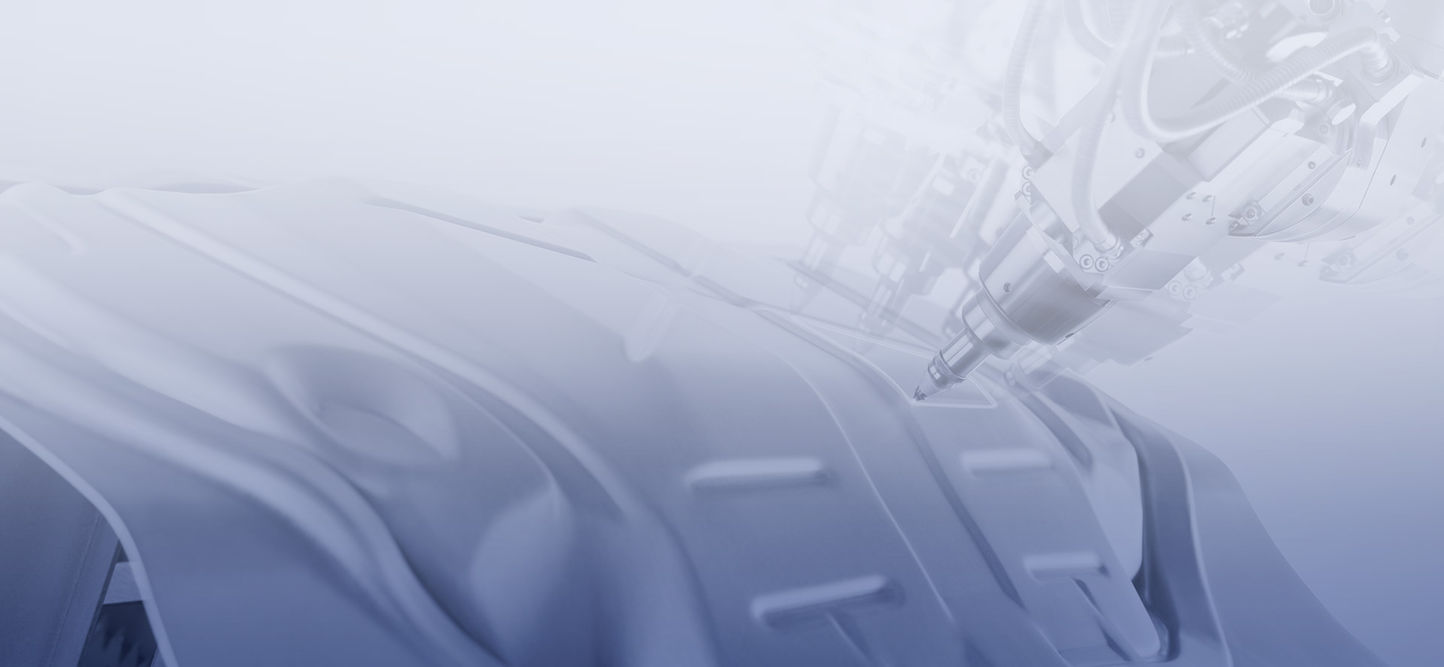
Are you a suitable innovation partner?
The Consortium of the European funded project Photonics4All gathers innovation offers (IOs) and innovation requests (IRs). If you are interested in publishing an IO or IR, you can choose between two handling options. First, Photonics4All consortium publishes only the proposal on photonics-related events (start-up challenge, photonics4investment, fairs, workshops) and everyone can contact us for details. Secondly, Photonics4All treats your IO/IR confidential and the consortium searches for potential partners. With this ideas we come back to you and ask whether we may establish the contact or not. If you are interested, please fill in the Innovation Offers and Requests Form and describe your innovation proposal.
Find potential partners here:
1: Busbarless rear contact solar cells: novel concept for wiring and interconnection
Property right:
- Patent registration
Type of partnership:
- Research cooperation
- Technical cooperation
- Licence agreement
At the University of Konstanz, Germany, a new method for wiring rear contact solar cells has been developed, in particular suited for wire-based interconnection of IBC solar cells. For wiring, narrow tabbing or wire (e.g. highly conductive copper wire), which is run orthogonally to the contact fingers, is used. Half of the wires are led through very small gaps in the p contacts to connect to the n contacts. The other half is led through gaps in the n contacts, connecting to the p contacts.
Benefits at a glance:
- Increase in cell efficiency though busbarless wiring of IBC cells
- Simplified contact design
- No insulation layer required between p and n metallization
- Technically simple and inexpensive production, using proven industrial technology
Interested? - Contact us!
3: Correction of angular errors in optical encoder readings prior to sensor signal generation
Property right:
- Patent granted
Type of partnership:
- Research cooperation
- Technical cooperation
- Licence agreement
The purely optical compensation of errors in encoder readings allows for robust sensor design with alignment-free assembly of the encoder disc. Due to a diffractive compensation track the beam spot on the measuring track can be compensated prior to sensor signal generation.
Benefits at a glance:
- Low-cost optical compensation of eccentricity of encoder disc
- Suited for incremental and absolute encoders
- Optical compensation of errors in encoder reading prior to signal generation
- No additional electronics required
- Alignment-free assembly of encoder disc
Interested? - Contact us!
5: Optical 3D storage for fast reading of large data volumes
Property right:
- Patent granted
Type of partnership:
- Research cooperation
- Technical cooperation
- Licence agreement
Reading up to 100 superimposed layers in an optical storage volume simultaneously offers a very high data transfer rate such as is needed for example in databases or data storage. Modified DVDs can be used as data storage media.
Benefits at a glance:
- Elevated data transfer rate
- Reading of up tp 100 superimposed layers in an volume storage device
- Highly insensitive to vibrations during the reading process
- Simultaneous capture of optical data at different depths
- Also applicable to data storage devices with minimal storage volume but high log-term stability
Interested? - Contact us!
7: Device for rotation of 3D samples in microscopy
Property right:
- Patent registration
Type of partnership:
- Research cooperation
- Technical cooperation
- Licence agreement
Scientists at Aalen University have developed a device which allows the rotation of samples. It can be used in conjunction with a range of microscopy methods, including single-plane illumination microscopy (SPIM) and laser scanning microscopy. This enables scientists for the first time to observe 3D samples from all sides using conventional microscopes. Since the sample is kept in a fixed position relative to the microscope, the method opens up new possibilities for the 3D reconstruction of samples, for example in combination with single plane imaging.
Benefits at a glance:
- Investigation of 3D samples using conventional microscopy
- Can easily be integrated into conventional microscopes from a range of manufacturers
- Requires only low light intensities, thus suitable for in vivo investigations
- Minimizes information loss in 3D reconstructions
- Miniaturization (small sample volumes)
- Modular design with easy access from the outside
- Coupling with micro-fluid system or special detection systems possible
Interested? - Contact us!
9: Marker-free chromosome screening
Property right:
- Patent granted
Type of partnership:
- Research cooperation
- Technical cooperation
- Licence agreement
Researchers at Reutlingen University have succeeded in developing a label-free method for the characterization of metaphase chromosomes. The method and the corresponding analysis algorithm allow for visualization of both the chemical properties (absorption) and the morphological properties (stray light) of a chromosome. Using this method, the bands and sub-bands can be characterized with high resolution. Thus, no staining is required for unambiguous identification. The technology can be integrated into all imaging methods (e.g.microscopy).
Benefits at a glance:
- Label-free technology
- Easy to use, quick and inexpensive
- Can be integrated into all imaging methods (e.g.microscopy)
- May be combined with high-resolution methods
Interested? - Contact us!
11: Search of partner for LIDAR application
Technologies and special know-how:
- Supercontinuum sources 320nm-4100nm
- Average power up to 6W
- Energy up to 6µJ
- Pulse on demand or free running
- Fibered systems
Innovative Aspects:
- Custom spectrum
- Custom fibers
- Mid Infrared wavelength: 1000-4100nm spectrum , 1W average power
- UV wavelength, down to 320nm
- Spatially singlemode at all wavelengths
Interested? - Contact us!
2: Optimum passivation of defects in crystalline silicon solar cells
Property right:
- Patent granted
Type of partnership:
- Research cooperation
- Technical cooperation
- Licence agreement
Monocrystalline solar cells that are produced using the relatively inexpensive CZ method (Czochralski method) display a noticeable drop in efficiency of more than 1% in absolute figures under sunlight within a few hours. This effect is called Light Induced Degradation (LID). Solar cells and modules are sold in relation to their performance. This is why elimination of light induced degradation holds tremendous economic potential. As early as 2006, a simple method for the regeneration of solar cells was developed at the University of Konstanz which proved to be very efficient at moderate temperatures and light intensity.
This well-known method has now been significantly enhanced and modified: the degradation of the Cz silicon solar cells can now be largely eliminated during the production process. The regeneration process is now carried out at much higher temperatures than before, using hydrogen that had diffused into silicon nitride. This makes the regeneration process a lot more efficient and faster. Ideally, this step follows the co-firing process during the production.
Benefits at a glance:
- Open up the full efficiency potential of solar cells
- Reduced process times during the regeneration process
- Increased efficiency in terms of regeneration
- Cost-effective and easy integration into existing manufacturing processes
Interested? - Contact us!
4: Non-permanent contacting for the characterization and classification of busbarless solar cells
Property right:
- Patent registration
Type of partnership:
- Research cooperation
- Technical cooperation
- Licence agreement
Scientists at the University of Konstanz have developed a measuring device for non-permanent contacting of busbarless solar cells that allows for precise and direct characterization of electrical properties. As each contact finger can be contacted repeatedly over reversibly releasable connections the device allows for accurate measurement of I-V characteristics without requiring subsequent adjustment with correction factors.
Benefits at a glance:
- Classification of busbarless solar cells
- Direct determination of electrical parameters during measurement without correction factors
- Current flow via multiple contact fingers
- Homogenization of current flow through optional resistors to compensate for locally uneven contacts
- Can be easily integrated into existing industrial processes and devices
Interested? - Contact us!
6: Wet chemical process for back side smoothing of industrially manufactured solar cells
Property right:
- Patent registration
Type of partnership:
- Research cooperation
- Technical cooperation
- Licence agreement
The efficiency of solar cells can be increased simply and effectively by smoothing the back side through wet chemical etching. A smooth surface structure makes the back side highly reflective. During smoothing, the parasitic emitter on the back side is etched away as well, while a viscous paste protects the microscopic pyramidal structure on the front side. The process utilizes solely inexpensive and established technologies in industrial manufacturing of solar cells.
Benefits at a glance:
- Removal of the parasitic emitter and an increase in the back side reflection in a single process step
- Increased efficiency through improved light coupling
- Smoothing of the back side with very little loss of material (less than 5 microns)
- The use of inexpensive and established technologies in industrial manufacturing
- Reduced surface recombination thanks to the smoothed back side texture
Interested? - Contact us!
8: In vivo screening based on fluorescence to identify novel antimicrobial substances
Property right:
- Patent registration
Type of partnership:
- Research cooperation
- Technical cooperation
- Licence agreement
The hierarchical and precisely controlled process creating ribosomes in living cells is known as ribosome assembly and is relatively little researched. In the eyes of many experts the early processes in the creation of ribosomes offer attractive targets for antimicrobial agents. The systematic search for such substances is made more difficult by the fact, that currently no suitable screening processes exist.
The present invention consists of stable bacterial strains with ribosomal subunits incorporating fluorescent markers, which have growth characteristics similar to wild type, and which have an intact translation apparatus. The positioning of the fluorophores allows for disturbances in the ribosome assembly to be detected in vivo by a fluorescence-based readout process. The process has been optimized for use with multi-well plates and thus is suitable for use in high throughput screenings (HTS).
Advantages:
- Simple in vivo screening process for the identification of novel antimicrobial agents
- Standardization of the process possible, e.g. suitable for HTS
- Possible novel active substances with reduced tendency for Development of resistance or Side-effects on mitochondrial ribosomes
- Great economic potential of the process due to the fact that many antibiotics currently available have become ineffective due to resistance
Interested? - Contact us!
10: New medical technology based on fiber optics
Technologies and special know-how:
- High performance hermetic feedthrough (hermeticity and pressure)
- Medical probes under ISO 13485 certification and CE marking
- Spools for ROV tether
- Spectroscopy probes and large bundles for telescopes
- Thin film coating on fibers (metallization, AR and dichroïc filters)
- Multimode couplers and WDMs
- Patchcords for high power LASER
- Very efficient design of medical probes under ISO 13485 certification and CE marking, particularly for Vein treatment, prostate surgery and PDT.
Innovative Aspects:
- Spools for ROV tether
- Very large bundles for telescope spectroscope
- Thin film coating on fibers (metallization, AR and dichroïc filters)
- Proprietary technology for Multimode achromatic couplers and WDMs
- High performance hermetic feedthrough (hermeticity and pressure)
Interested? - Contact us!
Joining forces! In close collaboration with the photonics project RespiceSME, we will also promote the chance of innovation partnerships during innovation audis in SMEs. Partner organisations that are involved in both projects will inform photonics companies during the RespiceSME innovation audits about the Photonics4All service to help finding innovation partners (see above). Finally, Photonics4All consortium plans that these innovation workshops will provide the basis for potential partnership agreements.
For more information, please contact Johannes Verst.
